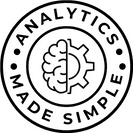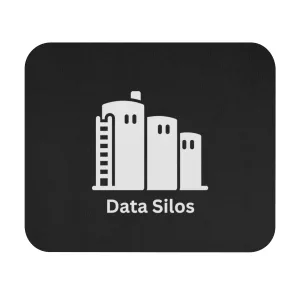Data is growing at an exponential rate across organizations today. By 2025, it’s estimated that 463 exabytes of data will be created each day globally. With rising data volumes and complexity, it has become crucial for companies to implement robust data governance frameworks.
Data governance refers to the overall strategy, policies, standards, and technologies required to manage data as a valued strategic asset across its lifecycle. With strong data governance, organizations can enhance data quality, enable trust in data for improved decision-making, and maintain regulatory compliance.
This article will explore key elements required for implementing effective data governance.
Table of Contents
Defining Data Governance
What is data governance and why does it matter?
Data governance establishes who is responsible and accountable for information management within an organization at a detailed level. It covers the people, processes, and technologies required to:
- Properly oversee data usage and value extraction
- Set policies for accessing, protecting, and managing data
- Ensure data quality through master data management
- Monitor data risks and compliance requirements
- Define standard definitions and metrics for data elements
Some key reasons why data governance is crucial include:
- Managing data growth – With rising data volumes, governance provides oversight on what data should be kept, archived, or disposed of. This allows cost savings through storage optimization.
- Enabling regulatory compliance – Governance helps adhere to regulations around data privacy, security, and consumer protection through appropriate data policies.
- Improving data quality – Governance mechanisms allow setting benchmarks for data accuracy, completeness, and timeliness. This leads to greater trust in data.
- Reducing operational risks – Governance minimizes vulnerabilities, leaks, and inefficiencies through detailed data management procedures.
- Driving business value – Governance allows maximizing the use of data for revenue growth, cost reductions, new products, and better decisions.
Data Governance Principles
At the core of successful data governance and stewardship programs are eight principles, including accountability, transparency, integrity, and usability. These principles guide organizations in establishing a robust and sustainable data governance framework, ensuring that data is managed effectively and ethically
Core Components of a Data Governance Framework
An effective data governance framework requires establishing the below core components:
- Data governance structure with clear roles and responsibilities – A cross-functional data governance council with representatives from IT, compliance, legal, data management, and business units should be created. Data owners, stewards, and process owners need to be identified with their duties defined.
- Policies for data security, quality, and lifecycle management – Policies need to be set for classifying data, determining access levels, protecting privacy, ensuring accuracy, and managing retention and disposal.
- Metadata management and business glossary – Metadata provides definitions for data elements and their attributes. A business glossary provides standard definitions for key data terms.
- Data quality measurement and monitoring – Data quality KPIs based on completeness, validity, accuracy, and consistency need monitoring. Data quality tools help automate monitoring.
- Issue escalation and resolution processes – Data issues like breaches, missing attributes, and inaccurate data need reporting and resolution workflows.
- Master data management – Master data like customer, product, and employee data needs centralized management to avoid inconsistencies.
- Data risk management and compliance reporting – Regular audits and risk assessments must be undertaken to identify vulnerabilities and ensure adherence to regulations.
Driving Business Value
Now that we’ve got a grip on the basics, let’s explore why Data Governance matters to businesses. Beyond being a compliance checkbox, a well-implemented Data Governance strategy can be a game-changer for your organization.
Imagine you’re making a decision, and you have two sets of information, one messy and unreliable, the other clean and trustworthy. Which one would you choose? The answer is obvious. Data Governance ensures that the data you rely on for decision-making is of the highest quality.
By setting standards for data accuracy and completeness, Data Governance enables organizations to make more informed decisions. This, in turn, translates into operational efficiency, better customer service, and ultimately, increased profitability.
Data Governance and Customer Trust
In an age where data breaches make headlines regularly, customer trust is more fragile than ever. Imagine you’re a customer entrusting a company with your personal information. Wouldn’t you want the assurance that your data is in safe hands?
This is where Data Governance plays a pivotal role. When organizations implement transparent and robust Data Governance strategies, they signal to their customers that data privacy and security are top priorities. This not only enhances customer trust but can also become a competitive differentiator in the market.
Best Practices for Implementing Data Governance
Launching a successful data governance initiative involves focus and collaboration. Below are some best practices:
- Get executive sponsorship – Exec sponsorship ensures data governance gets sufficient priority and funding across units.
- Involve key stakeholders – Input from IT, compliance, legal, and business teams will help address end-to-end needs.
- Start with a specific business use case – Beginning with a defined goal like improving customer data quality will demonstrate direct value.
- Communicate with impacted teams – Training and workshops will clarify governance roles and get buy-in on new processes.
- Automate policies through data catalogs – Metadata management and policy enforcement can be automated in tools like Collibra.
- Monitor usage and continuously improve – Leverage data quality, risk, and compliance reports to refine policies and processes.
- Publicize successes – Communicate wins on data quality or risk reduction to gain momentum.
Building a Data Governance Team
Now that we understand the importance of Data Governance, how do we go about implementing it? It starts with building the right team. Data Governance is a collaborative effort that requires a mix of skills and expertise.
Consider it like assembling a superhero squad, each member bringing a unique skill to the table. Your Data Governance team should include representatives from IT, legal, compliance, and business units. This cross-functional approach ensures that all aspects of Data Governance, from technical implementation to legal compliance, are covered.
Empower your team with the knowledge and tools they need to navigate the Data Governance landscape. Training programs and workshops can be instrumental in building a skilled and motivated Data Governance team.
Evolving Nature of Data Governance
Data governance is an ever-evolving project that requires organizations to revisit and question their idea of data governance before formulating a framework. As data volumes grow and new data streams emerge, periodic reviews of the data governance structure are necessary to ensure operational effectiveness and minimize risks associated with poor data management
Sources
- https://blog.hubspot.com/website/data-governance
- https://www.cio.com/article/202183/what-is-data-governance-a-best-practices-framework-for-managing-data-assets.html
- https://atlan.com/data-governance-framework/
- https://www.techtarget.com/searchdatamanagement/definition/data-governance
Summary
Implementing data governance is crucial but involves nuanced orchestration across people, processes, and systems. Organizations must strategically plan governance policies and structures. When done right, data governance maximizes the value derived from data assets while minimizing cost and risk. It leads to higher-quality data for enhanced decision-making and innovation.
With rising regulatory pressures and data volumes, establishing robust data governance must be a priority for enterprises today. Assessing the current state and establishing a data governance council are good first steps. Starting with a pilot focused on a key business objective will demonstrate measurable results and pave the way for an enterprise-wide program.
Hope this was helpful and as usual!
Cheers!
J
Check out the merch store for some cool analytics-inspired gear!

-
 Data Silos Mouse Pad$18.00
Data Silos Mouse Pad$18.00 -
 Data Cleansing Coffee Mug$25.00
Data Cleansing Coffee Mug$25.00 -
 Data Cleansing Shirt$25.00 – $28.00
Data Cleansing Shirt$25.00 – $28.00











